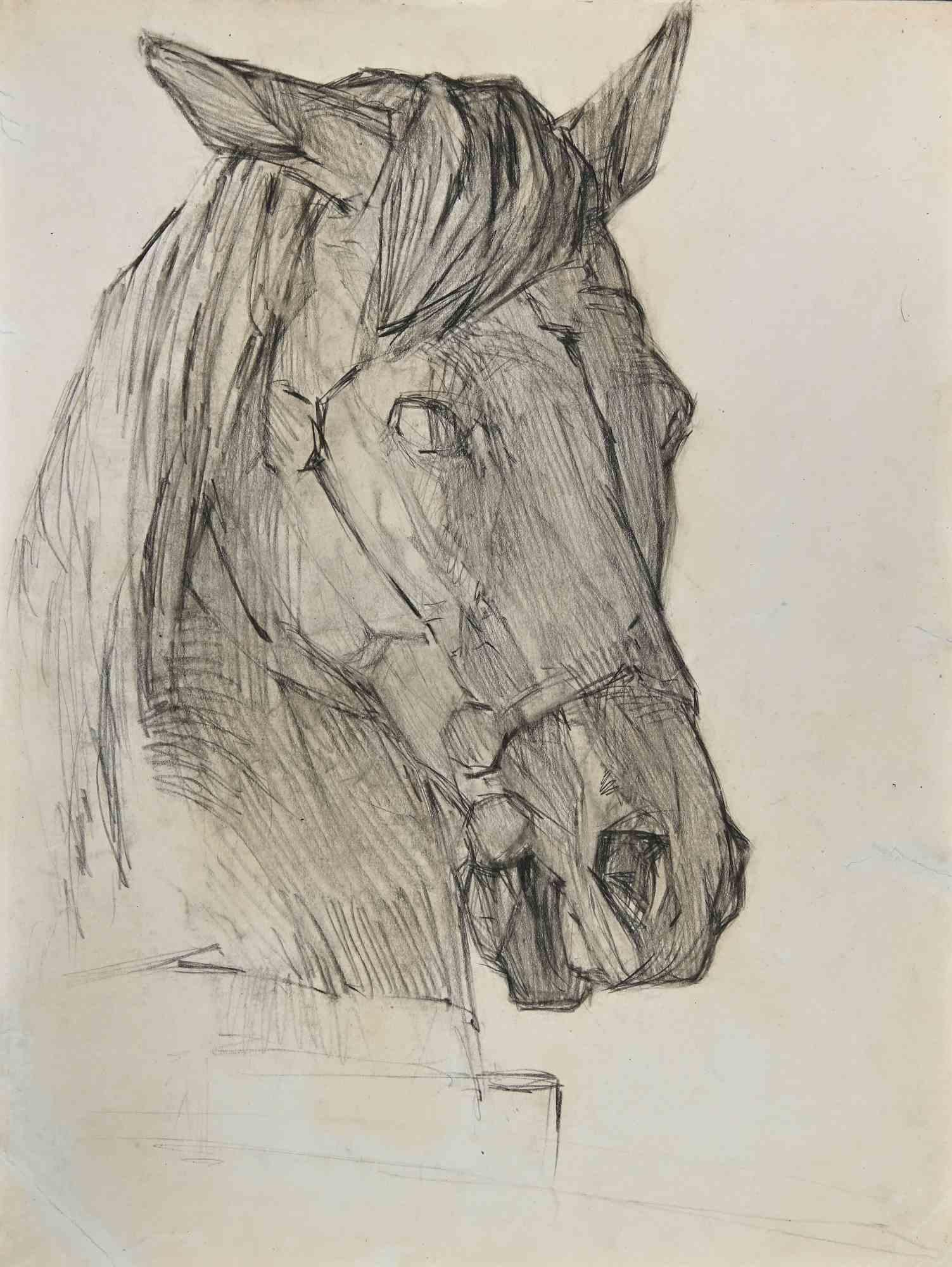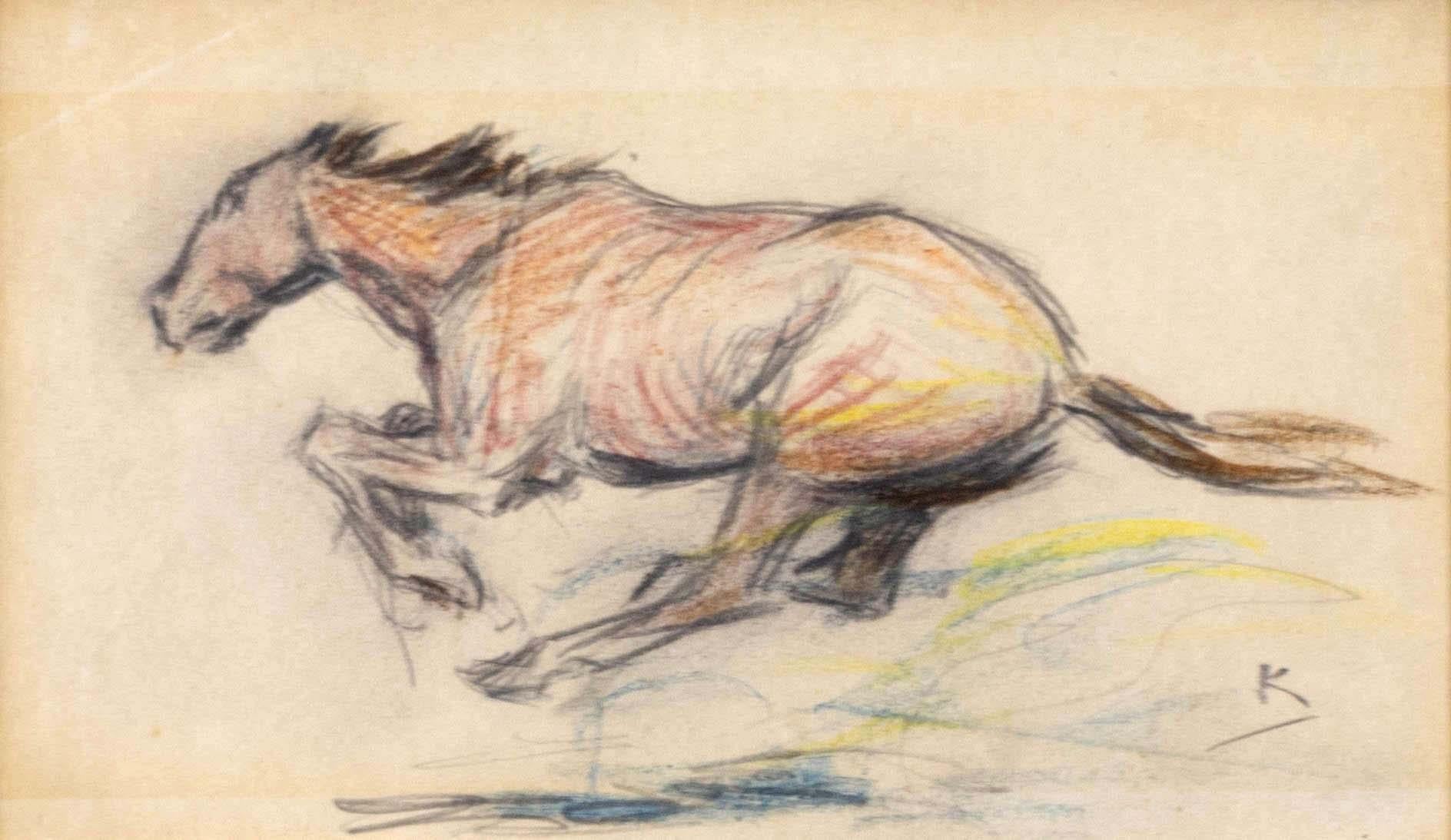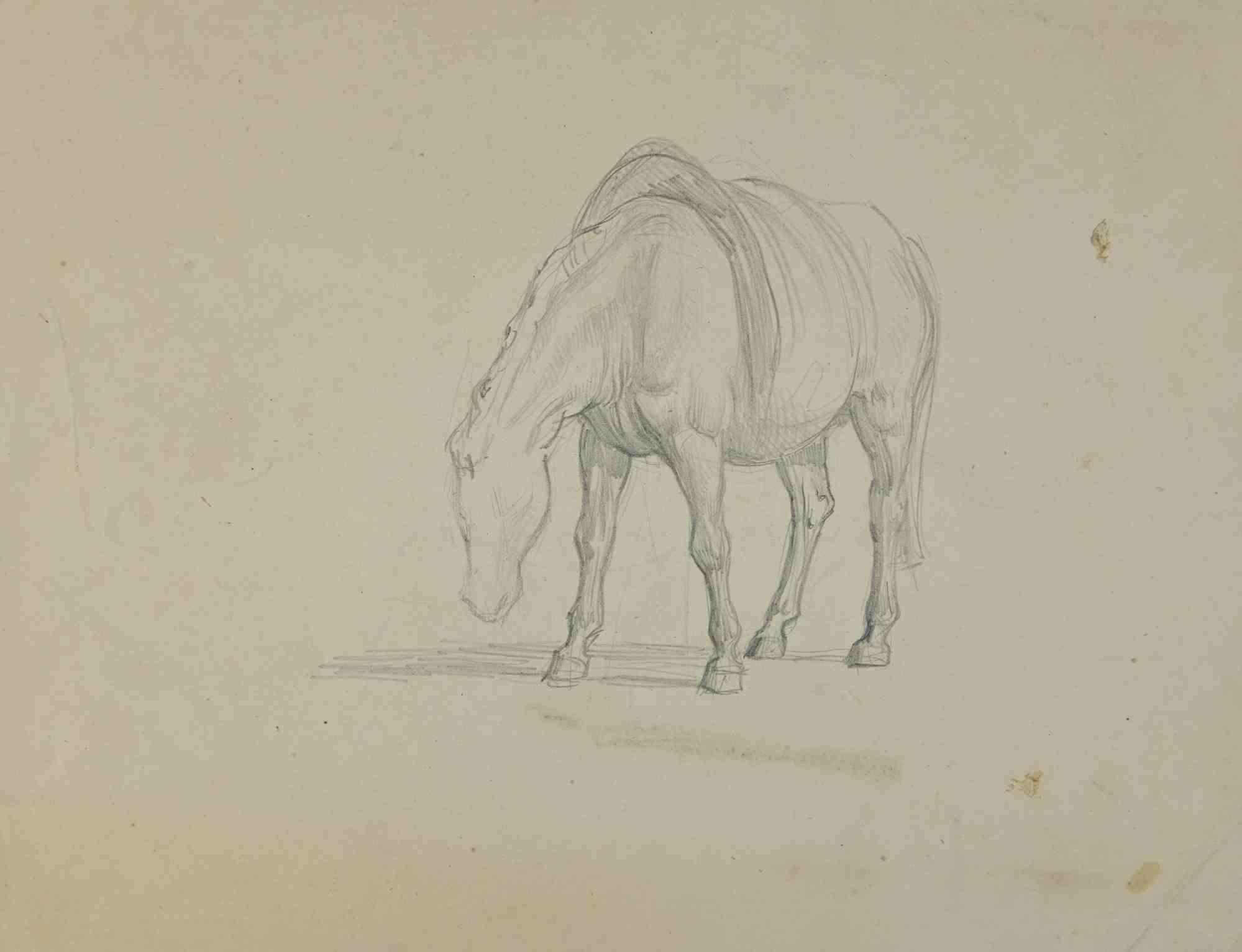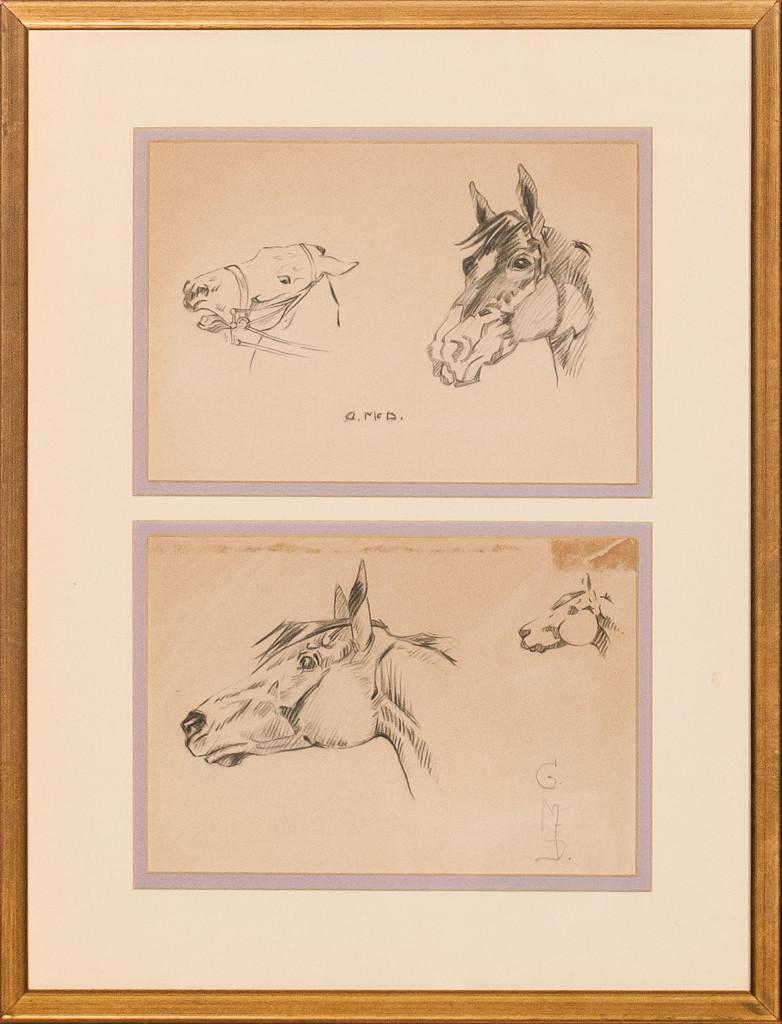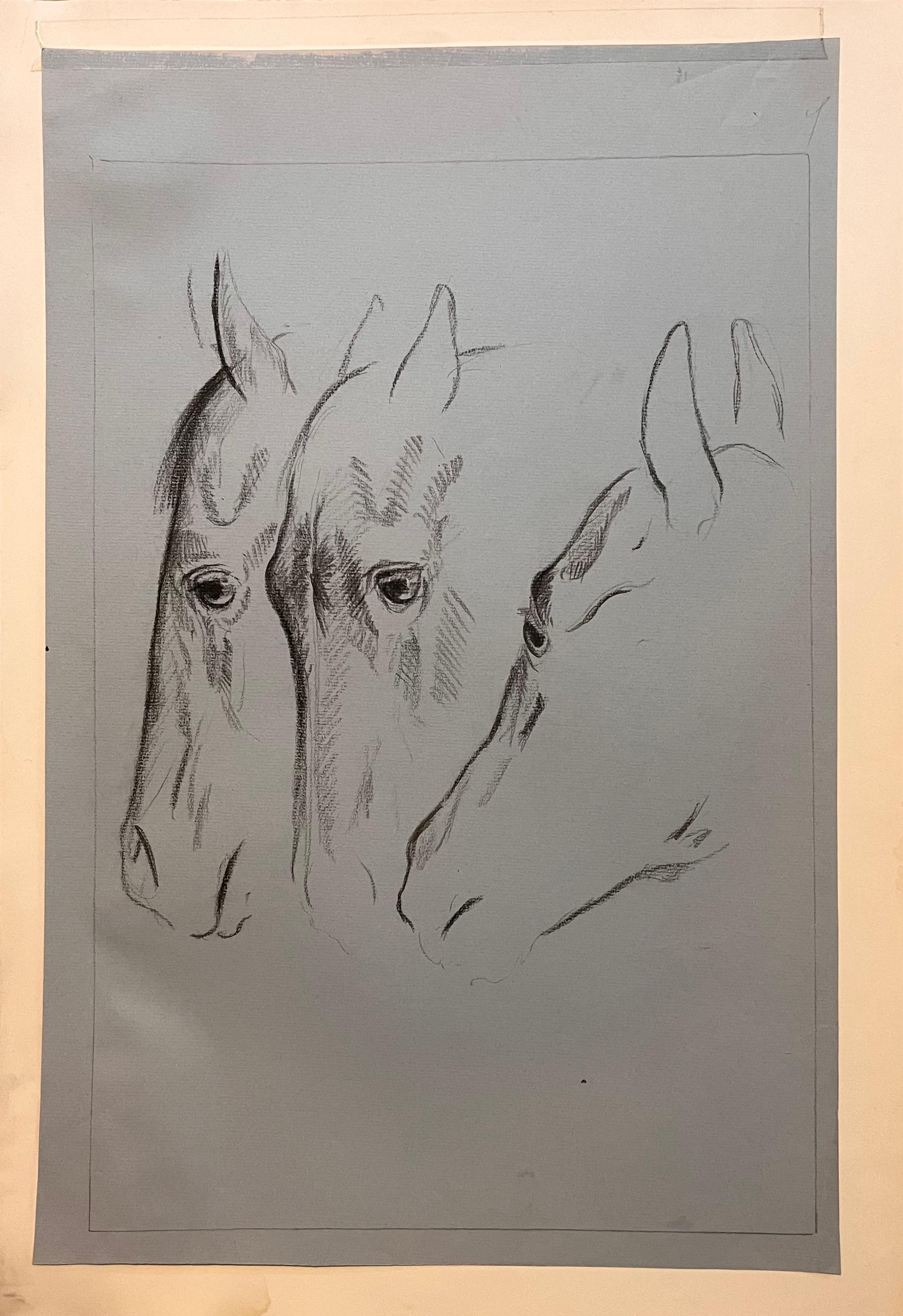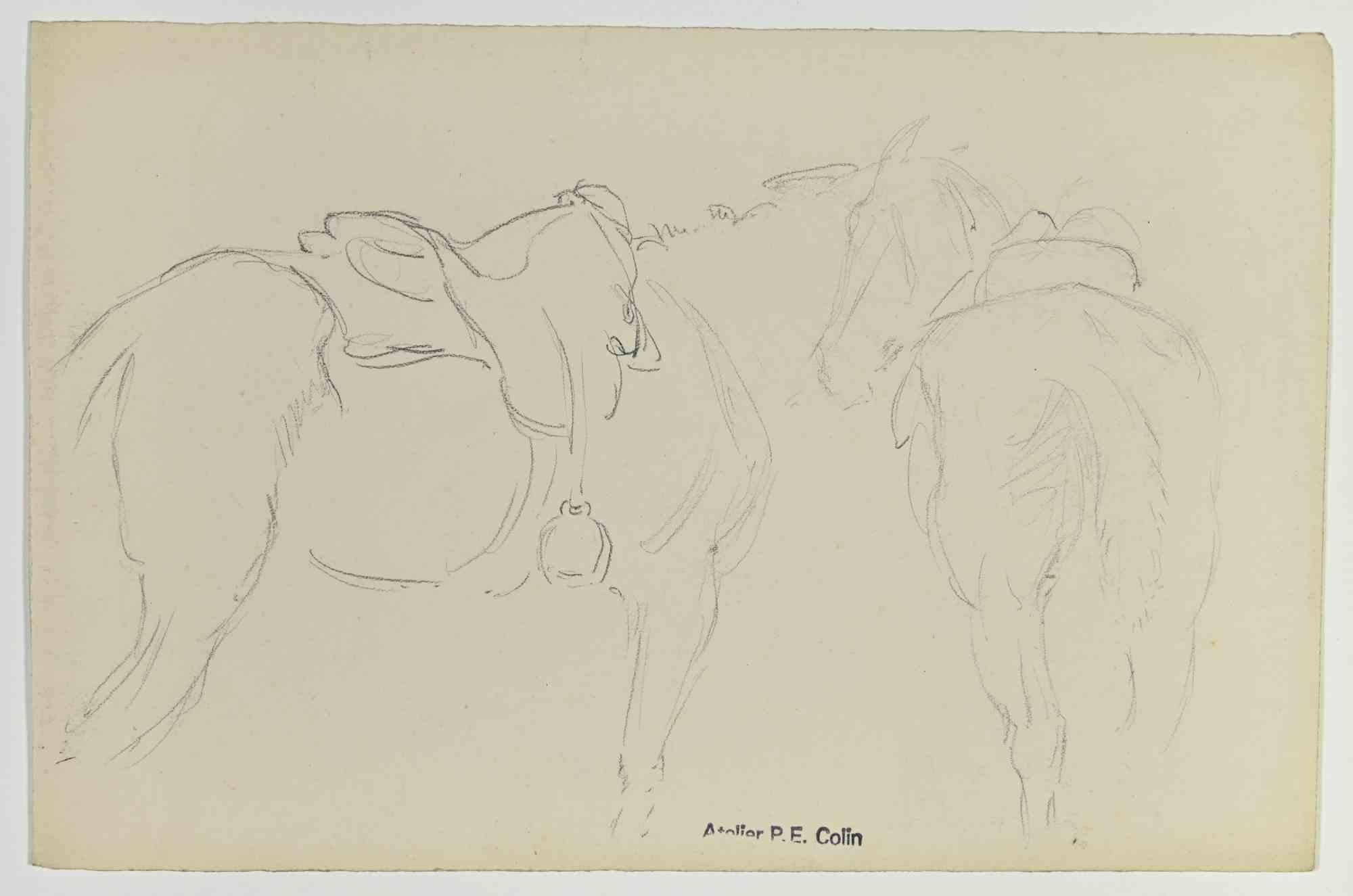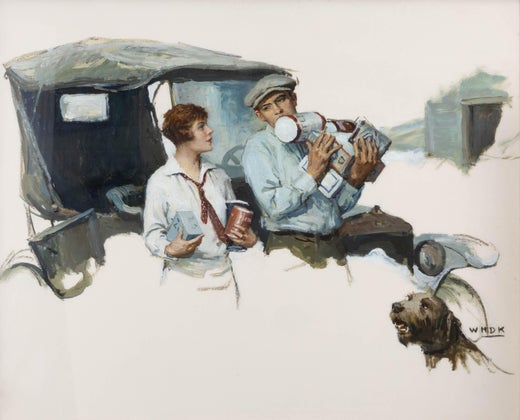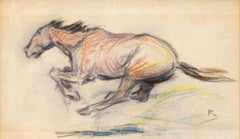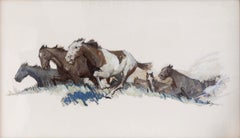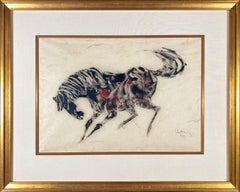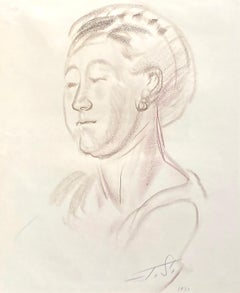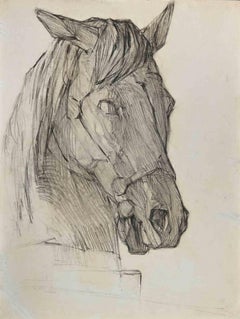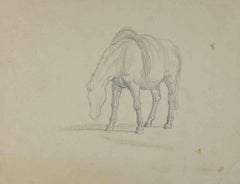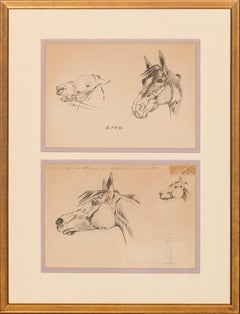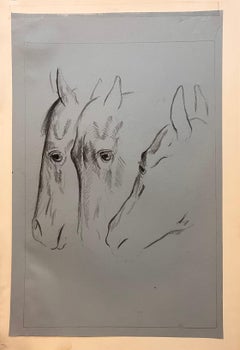Items Similar to Four Horse Head Studies
Video Loading
Want more images or videos?
Request additional images or videos from the seller
1 of 8
William Henry Dethlef KoernerFour Horse Head Studies
$2,500
£1,885.01
€2,180.29
CA$3,536.98
A$3,856.08
CHF 2,037.48
MX$47,420.77
NOK 25,334.43
SEK 23,849.01
DKK 16,276.23
About the Item
Four Horse Head Studies
William Henry Dethlef Koerner (German, American, 1878-1938)
Pencil on Paper
Signed Lower Left
9 x 7 inches
16 x 14 inches with frame
William Henry Dethlef Koerner is renowned as one of the master illustrators of America's Wild West, ranking with Frederic Remington, Charles M. Russell, Phillip R. Goodwin, and Harvey Dunn.
Koerner's illustrations are known for his bold brushwork with a vibrant color palette which enabled his vigorous depictions of the 'Great American West,' emblemic images of those untamed territories.
Born in Lunden, Holstein, Germany, Koerner with his parents immigrated to Clinton, Iowa when he was three years old. Although he had little art training as a youth, his raw talent was always obvious to his parents and to everyone who viewed his sketches.
At the age of twenty, Koerner was hired by the Chicago Tribune as a staff artist at $5 per day, quite a respectable income in 1898. Shortly thereafter, he married and accepted a job as art editor for a brand new newspaper, the United States Daily. Unfortunately, that newspaper was shortlived, and as such, the young couple decided that New York could not survive without them and they moved east.
Once established in New York, Koerner was hired by Pilgrim Magazine to cover the 1904 St. Louis Exposition, it was then that he realized that he needed proper instruction to succeed further in his chosen field. He enrolled at the Art Students League for a two-year program between 1905-07, under the venerable George Bridgman, Norman Rockwell's teacher.
A student colleague later persuaded Koerner to apply to Howard Pyle's illustration school in Wilmington. Koerner's exposure to Howard Pyle was significant, but his student colleagues also had much to offer and he shared techniques and styles with of N. C. Wyeth, Harvey Dunn, Frank Schoonover and Stanley Arthurs.
While still a Pyle student, he rented a studio adjacent to Anton Otto Fischer and William Foster, and the interaction between these talented students proved mutually invaluable.
Howard Pyle passed away in 1911, and Bill Koerner was honored to write a eulogy tribute to his beloved mentor, and it was published in the New Amstel Magazine. A year later, the first exhibition by Pyle's students was presented to the public, and Koerner's works figured prominently, standing out amongst very strong competition.
In 1919, the Saturday Evening Post art editor invited Koerner to illustrate two articles with Western themes which proved to be a major turning point in his life. The articles, "The Covered Wagon" and "Traveling the Old Trails" entailed many Western frontier scenes, which up to that point, he had not experienced. Immediately Koerner thrust himself into researching the correct depictions of things totally unfamiliar.
The West immediately captured his imagination and captivated his soul and as a result, he dove into it's history, tools and weapons, livestock and wildlife, architecture and building types and the eccentric characters who inhabited the plains and mountains. In the process, WHD Koerner became one of the best-known artists of the old West. He learned more about the visual elements than most seasoned cowboys could articulate and went to gain more knowledge of the authentic way to picture the West.
Trips with his family ensued as reconnaissance journeys to absorb the atmosphere in order to better portray reality. Ultimately, his paintings were imbued with an ambience true to the territories he was depicting, just as Pyle had taught.
From 1922 onwards, Koerner illustrated more than two-hundred and fifty stories with Western themes and painted over six hundred pictures for periodicals. He illustrated a number of books including those by author, Zane Grey (The Drift Fence and Sunset Pass) and Eugene M. Rhodes's classic, Paso Por Aqui. Overall it is assumed that he completed nearly two-thousand illustrations of which about eighteen hundred were done for magazines, as well as advertisements for C. W. Post 's Grape-Nuts and Postum cereals.
In 1924, the Koerner family took a trip to Montana where his fame for Wild West paintings had grown widespread and he was received 'home' as a local cowboy. American's always loved the notion of the frontier and a rugged lifestyle of independence. Koerner was one of the first to portray it accurately for mass consumption.
It is not surprising to learn that Maxfield Parrish was a great influence on Koerner and his use of color. Parrish illustrated "The Great Southwest" articles by Raymond Stannard Baker which appeared in Century Magazine. In those western landscapes Parrish burst forth with bold colors used in a way which had not been done before. The colors seemed unreal and even surreal; pure oranges, cobalt blue and purple skies, red suns with cadmium streams of light-a vision to behold and the Parrish images, like the West itself, captivated Bill Koerner.
A prolific and versatile artist-illustrator, 'Big Bill' Koerner's work gained considerable visibility through his cover and story illustrations for the Saturday Evening Post, The Ladies' Home Journal, Harper's, McClure's Magazine and Red Book. He died in 1938 at fifty-eight, having been seriously ill and unable to paint for three years prior.
- Creator:William Henry Dethlef Koerner (1878 - 1938)
- Dimensions:Height: 9 in (22.86 cm)Width: 7 in (17.78 cm)
- Medium:
- Movement & Style:
- Period:
- Condition:
- Gallery Location:Missouri, MO
- Reference Number:1stDibs: LU747316251882
William Henry Dethlef Koerner
An impressionistic, antique landscape painting depicting the rugged coastal beauty of Race Point Beach, Massechusets. The rocky coastline and rushing waves are rendered in luminous shades of pink, turquoise, blue, green, indigo, and purple. The painting is executed in oil on board and measures 14 x 16 inches. It is attractively framed and ready to hang in a dark brown frame with a decorative motif. This piece was purchased by our gallery directly from the daughter of W. H. D. Koerner (1878 - 1938).
About the Seller
5.0
Vetted Professional Seller
Every seller passes strict standards for authenticity and reliability
Established in 1970
1stDibs seller since 2017
155 sales on 1stDibs
Typical response time: Several days
- ShippingRetrieving quote...Shipping from: Missouri, MO
- Return Policy
Authenticity Guarantee
In the unlikely event there’s an issue with an item’s authenticity, contact us within 1 year for a full refund. DetailsMoney-Back Guarantee
If your item is not as described, is damaged in transit, or does not arrive, contact us within 7 days for a full refund. Details24-Hour Cancellation
You have a 24-hour grace period in which to reconsider your purchase, with no questions asked.Vetted Professional Sellers
Our world-class sellers must adhere to strict standards for service and quality, maintaining the integrity of our listings.Price-Match Guarantee
If you find that a seller listed the same item for a lower price elsewhere, we’ll match it.Trusted Global Delivery
Our best-in-class carrier network provides specialized shipping options worldwide, including custom delivery.More From This Seller
View AllRunning Horse
By William Henry Dethlef Koerner
Located in Missouri, MO
Running Horse
William Henry Dethlef Koerner (German, American, 1878-1938)
Pencil on Paper
Signed Lower Right
5 x 8 inches
12 x 15 inches with frame
William Henry Dethlef Koerner is ...
Category
Early 20th Century American Modern Animal Drawings and Watercolors
Materials
Paper, Pencil, Color Pencil
The Painted Stallion
By William Henry Dethlef Koerner
Located in Missouri, MO
The Painted Stallion
William Henry Dethlef Koerner (German, American, 1878-1938)
Oil on Panel
Signed Lower Right
Titled Verso
21.5 x 37 inches
26.5 x 42.5 inches with frame
Written ...
Category
Early 20th Century American Modern Landscape Paintings
Materials
Oil, Panel
Majestic Horse
By Hoi Lebadang
Located in Missouri, MO
Hoi Lebedang
"Majestic Horse" c. 1950s
Original Mixed Media on Paper
Signed "Lebedang, Paris" Lower Right
Site Size: approx 13 x 20 inches
Framed Size: ...
Category
1950s Modern Animal Drawings and Watercolors
Materials
Paper, Ink, Watercolor
Price Upon Request
Head Study, 1930
By John Sloan
Located in Missouri, MO
Head Study, 1930
John Sloan (1871-1951)
Signed Lower Right
10.5" x 9" Unframed
19" x 16.5" Framed
Born in Lock Haven, Pennsylvania, John Sloan became one o...
Category
Early 20th Century Ashcan School Portrait Drawings and Watercolors
Materials
Paper, Conté
Price Upon Request
Three Setters on Point
By Edmund Henry Osthaus
Located in Missouri, MO
Three Setters on Point
Edmund Henry Osthaus (German, 1858-1928)
Watercolor on Paper
Signed Lower Right
18 x 27 inches
24.5 x 33.5 inches with frame
Born in Hildesheim, Germany, Edmu...
Category
Early 20th Century Realist Animal Drawings and Watercolors
Materials
Watercolor, Paper
The Noble Bull
By William Robinson Leigh
Located in Missouri, MO
William Robinson Leigh
"The Noble Bull"
Watercolor on Paper
Signed Lower Left
Site Size: 20 x 15 inches
Framed Size: approx. 33.5 inches x 27 inches
Born near Falling Waters, West Virginia on a plantation a year after the Civil War, and raised in Baltimore, William Leigh became one of the foremost painters of the American West with a career of seventy-five years. Some people referred to him as the "Sagebrush Rembrandt".
He was the son of impoverished Southern aristocrats and took his first art training at age 14 from Hugh Newell (1830-1915) at the Maryland Institute where he was regarded as one of the best students in his class. From 1883 to 1895, he studied in Europe, mainly at the Royal Academy in Munich with Ludwig Loefftz. From 1891 to 1896, he painted six cycloramas or murals in the round, a giant German panorama.
In 1896, he began working as a magazine illustrator in New York City for Scribner's and Collier's Weekly Magazine, and he also painted portraits, landscapes, and genre scenes. However, he was not a very successful artist in those years in New York.
Trips to the Southwest began in 1906 when he made an agreement with William Simpson, Santa Fe Railway advertising manager, to paint the Grand Canyon in exchange for free transportation West. In 1907, he completed his Grand Canyon painting...
Category
Early 20th Century American Realist Animal Drawings and Watercolors
Materials
Paper, Watercolor
Price Upon Request
You May Also Like
Horse's Head - Drawing - Late 19th Century
Located in Roma, IT
Horse's Head is an original pencil drawing on paper, attributed to Luigi Galli and realized in the late 19th Century.
With another drawing of hands...
Category
Late 19th Century Modern Figurative Drawings and Watercolors
Materials
Pencil
Horse - Drawing by Joseph Alexander Colin - Mid-20th Century
Located in Roma, IT
Horse is a drawing realized by Joseph Colin in the Mid-20th Century.
Pencil on ivory-colored paper
Good conditions with slight foxing.
The artwork is realized through deft express...
Category
Mid-20th Century Modern Figurative Drawings and Watercolors
Materials
Pencil, Paper
"Horse Heads Pencil Drawing"
Located in Bristol, CT
Classic Munnings-esque study of horse horseheads
c1950
Art Sz: 12"H x 8"W
Frame Sz: 16 3/4"H x 12 3/4"W
Category
1950s Drawings and Watercolor Paintings
Materials
Pencil
Study of the Movement of a Horses Head by Robert Ladou
By Robert Ladou
Located in Cirencester, Gloucestershire
Title: Study of the Movement of a Horses Head by Robert Ladou
Artist: Robert Ladou (French, 1929-2014)
Medium: Charcoal on blue paper
Size: 20 (Height) x 13.75 (Width)
Signed: No
Co...
Category
20th Century Academic Animal Paintings
Materials
Charcoal
Horses - Drawing by Paul Emile Colin - Early-20th century
Located in Roma, IT
Horses is a drawing realized by Paul Emile Colin in the Early 20th Century.
Carbon Pencil on ivory-colored paper
Stamped on the lower.
Good conditions with slight foxing.
The art...
Category
Early 20th Century Modern Landscape Drawings and Watercolors
Materials
Pencil
Horses - Drawing by Paul Emile Colin - Mid-20th Century
Located in Roma, IT
Horses is a drawing realized by Paul Emile Colin in the mid 20th Century.
Carbon Pencil on ivory-colored paper
Stamped on the lower.
Good conditions.
The artwork is realized thro...
Category
Mid-20th Century Modern Figurative Prints
Materials
Pencil
